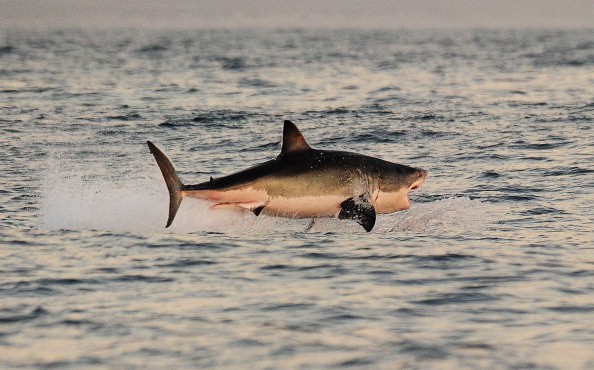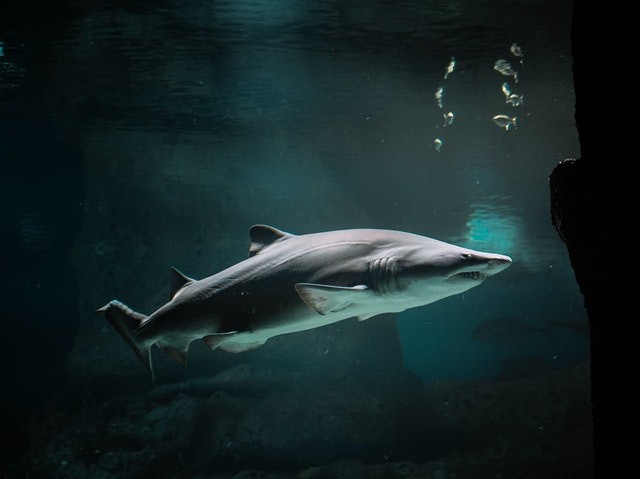A first universal study testing a simulated shark vision model on the swimming behaviors of people, seals, and sea lions verify the theories that bite from great white sharks are often due to mistaken identity.

Shark Attacks
Dr. Laura Ryan, lead author and a post-doctoral researcher in animal sensory systems at a Neurobiology Lab in Macquarie University said: "Surfers are the highest-risk group for fatal shark bites, especially by juvenile white sharks."
White sharks often referred to as great white sharks, are responsible for most of human bites, along with the bull and tiger sharks.
She said they discovered that since white sharks can't perceive fine features or colors, surfers, swimmers, and pinnipeds (seals and sea-lions) on the ocean's surface will appear the same to a white shark gazing up from below.
Despite her involvement in the shark-bite study, Ryan remains an avid surfer and believes that this study can aid scientists to get a better understanding of why some sharks bite humans.
In response, researchers at the Neurobiology Lab are developing non-invasive vision-based gadgets that might protect surfers and swimmers from shark attacks.
The Study
In big aquarium at Taronga Zoo, the researchers evaluated underwater footage of rectangular floats, seals and sea lions swimming, humans swimming different strokes, and humans paddling on varied-sized surfboards with both motionless and moving cameras pointed toward the surface of water.
Ryan said they mounted a camera to an underwater bike and programmed it to move at a predatory shark's cruising pace.
The scientists used significant shark neuroscience data to add filters to the video footage and then developed modeling programs to replicate how a juvenile white shark might analyze the motions and forms of various things back at Macquarie's Neurobiology Lab.
Ryan acknowledges, "I didn't realize being a scientist would involve quite so much coding," but the findings help clarify things: when people swim and paddle surfboards, they look a lot like seals and sea lions to a juvenile white shark.
White sharks, which normally hunt tiny, immature pinniped pups, may find smaller surfboards more appealing than longboards or even stand-up paddleboards.
Because most sharks are colorblind and the silhouette form is the most important visual signal for white sharks, colors on boards and wetsuits are unlikely to influence sharks' perceptions of moving people.
The researchers are currently looking at additional options for influencing how sharks perceive different shapes, such as the careful use of LED lights.

How Can Surfers be Protected?
Despite the minimal danger of shark bite, Australia is the world's deadliest shark playground, with six of the world's ten unprovoked fatal shark encounters in 2020 alone.
Shark attacks on people have increased dramatically in the last 20 years, and Ryan believes that surfers are in more danger than swimmers because they spend so much more time in the water, usually in deeper water.
Sharks employ a variety of visual signals to differentiate between items and focus on their prey, and the sensitivity of these cues varies by shark species, Ryan explains.
Juveniles are more harmful to people than older, bigger white sharks with greater vision. White sharks must learn what to eat, according to Professor Nathan Hart, who directs the Neurobiology Lab and is a senior author of the study.
When white sharks reach a length of around 2.5 meters, their jaws harden to allow them to take on larger prey like seals, he says. Sharks are dangerous, but they are also endangered, and human fear of the creature has led to preventative measures such as shark nets and drumlines, which endanger marine life.
Knowing why shark bites happen will help researchers figure out how to prevent them and keep both humans and sharks safe, Ryan adds.
Related Article : Rising Number of Shark Attacks in Australia Reveals A Darker Story
For more news, updates about shark attacks and similar topics don't forget to follow Nature World News!
© 2025 NatureWorldNews.com All rights reserved. Do not reproduce without permission.





